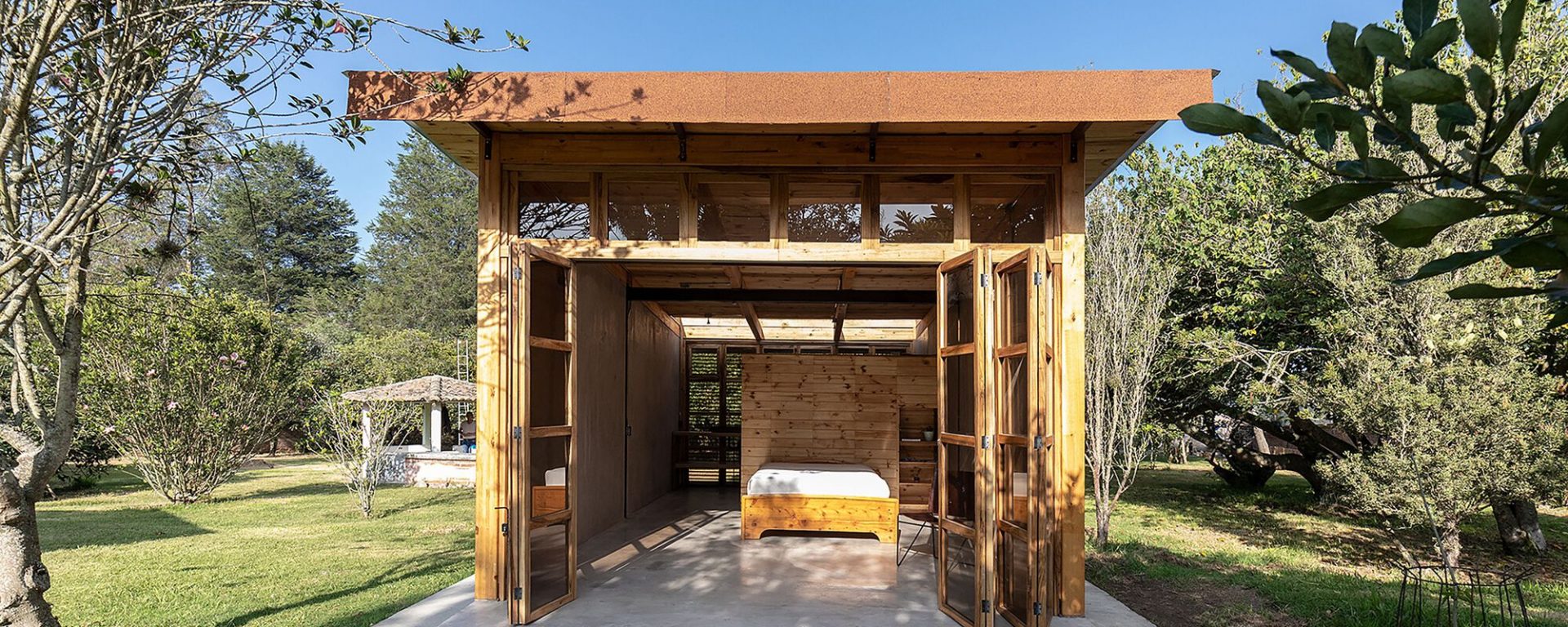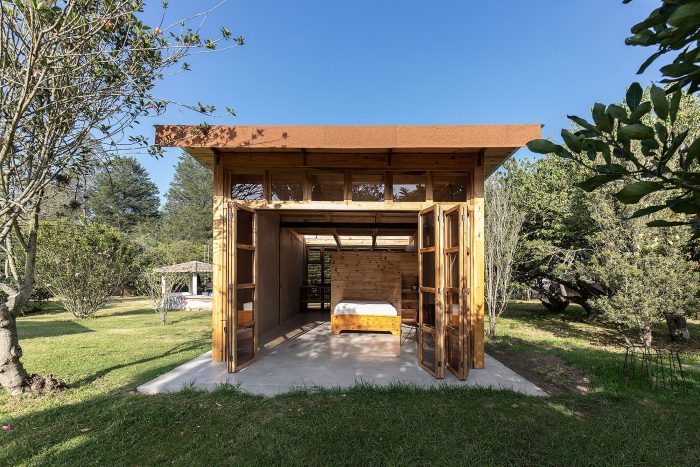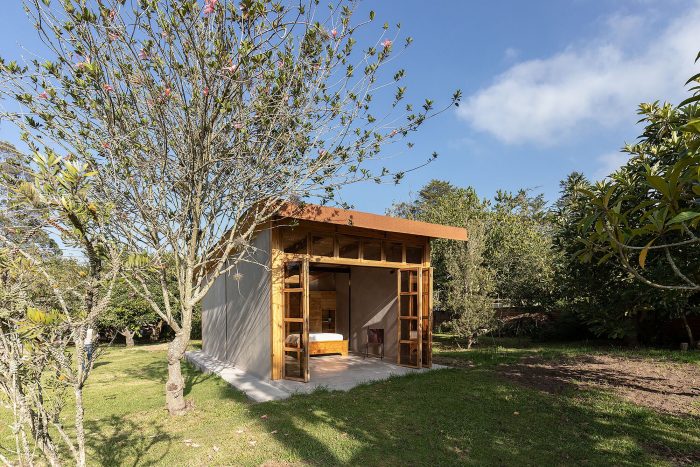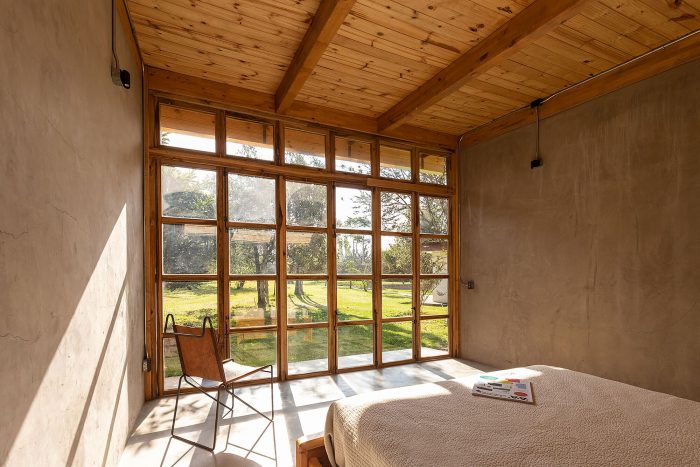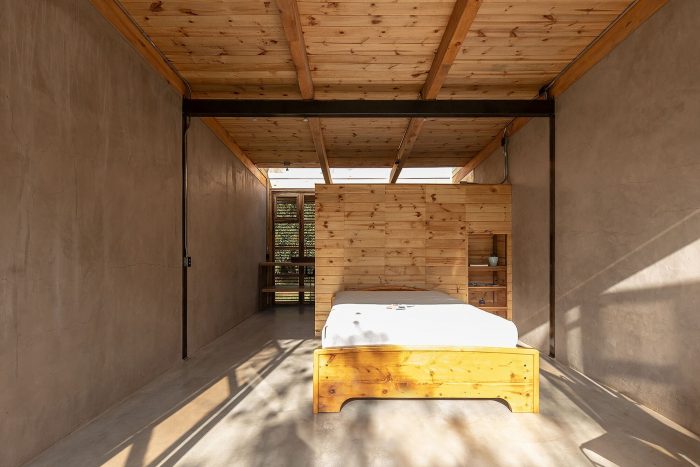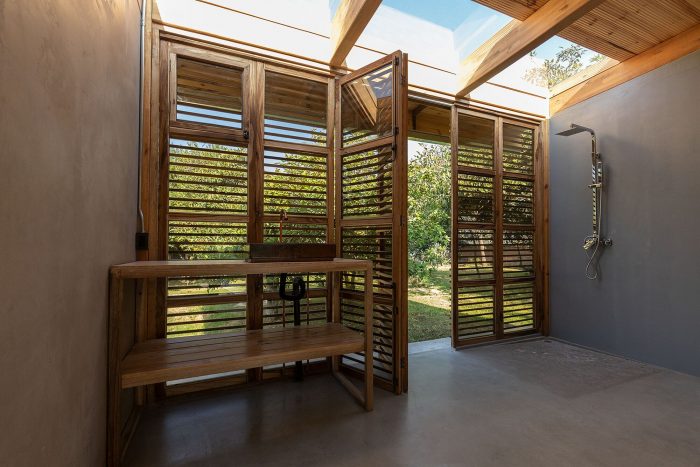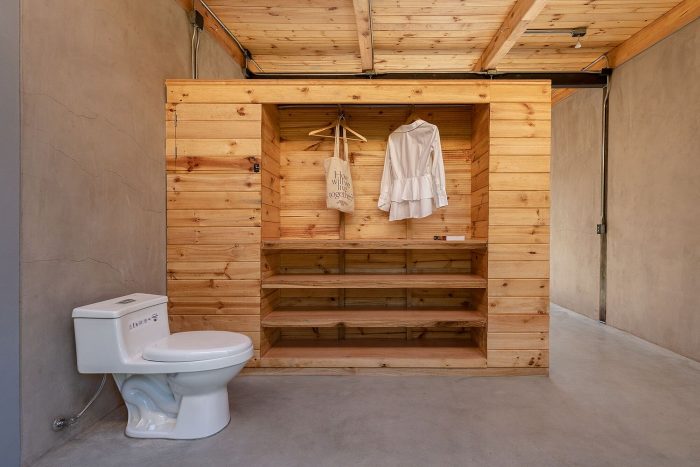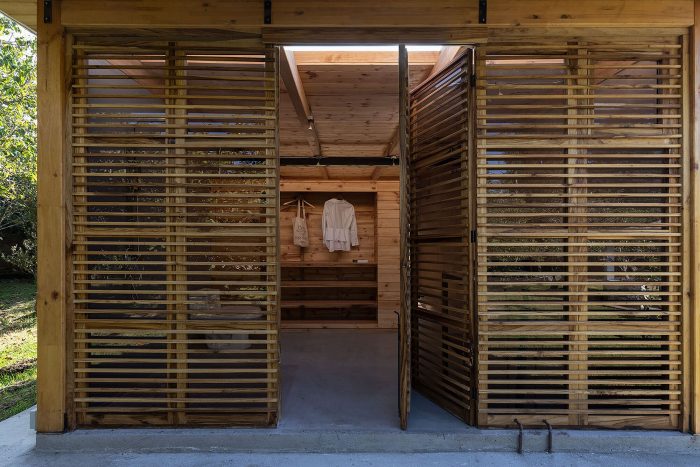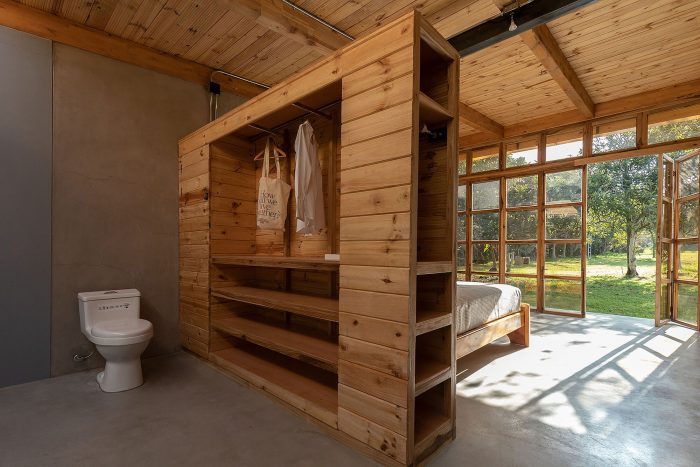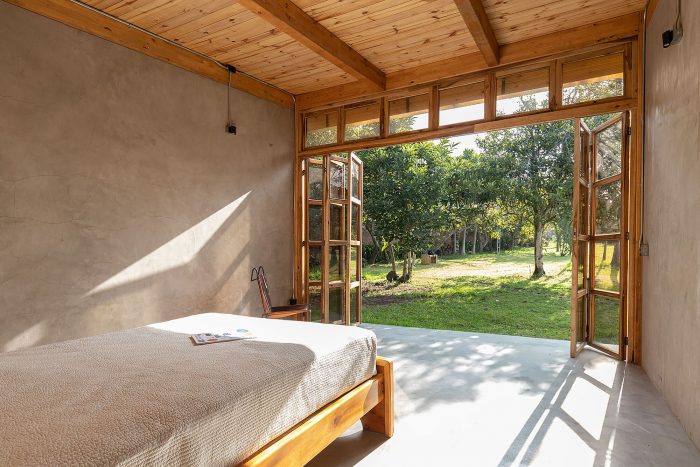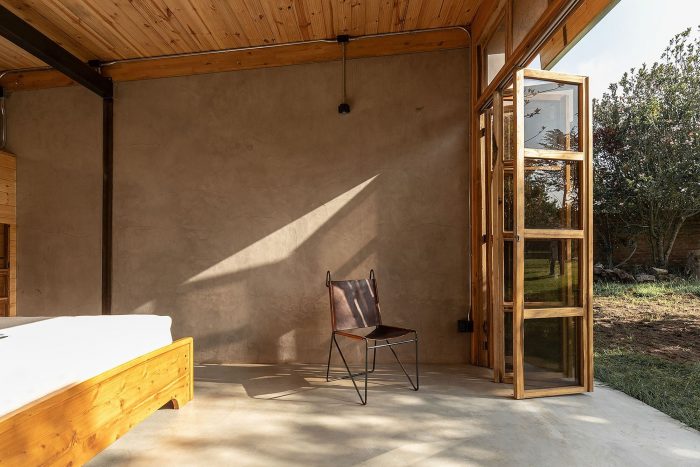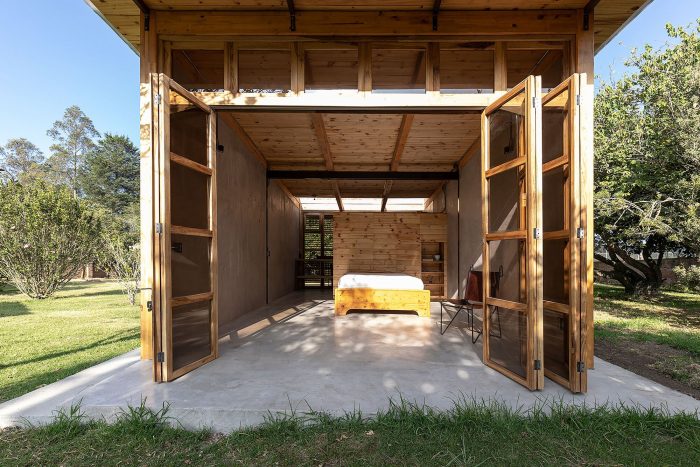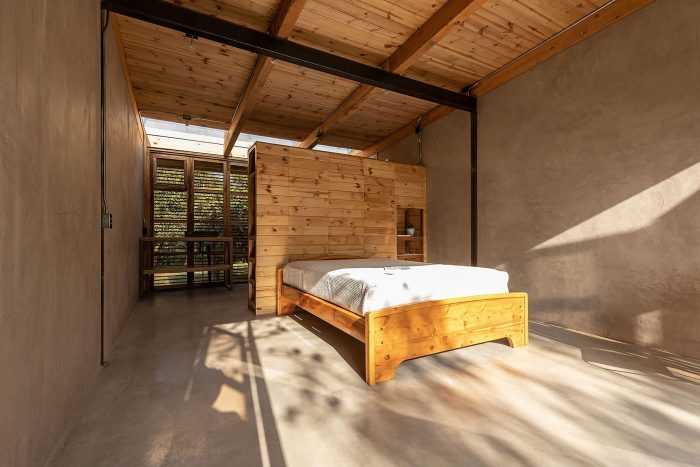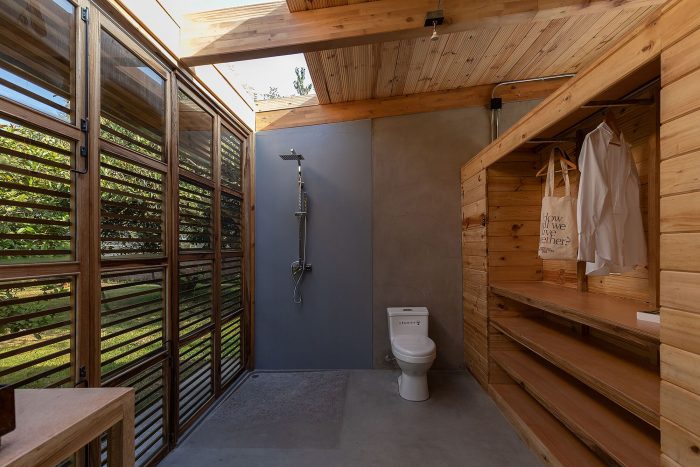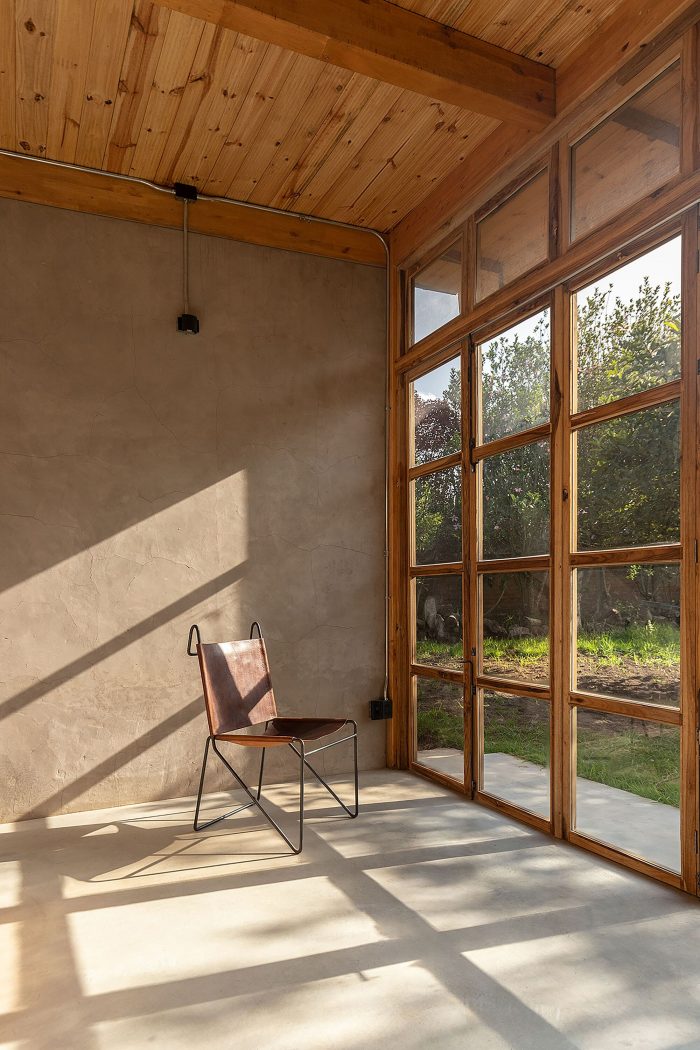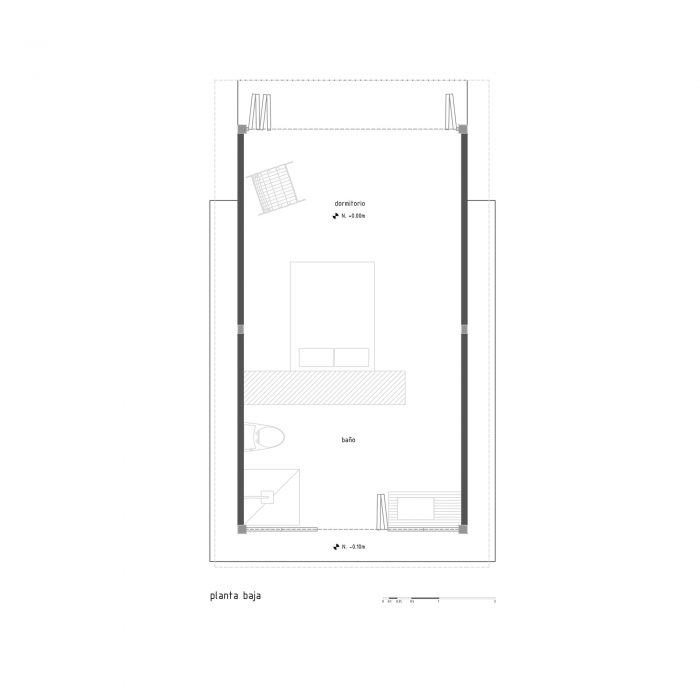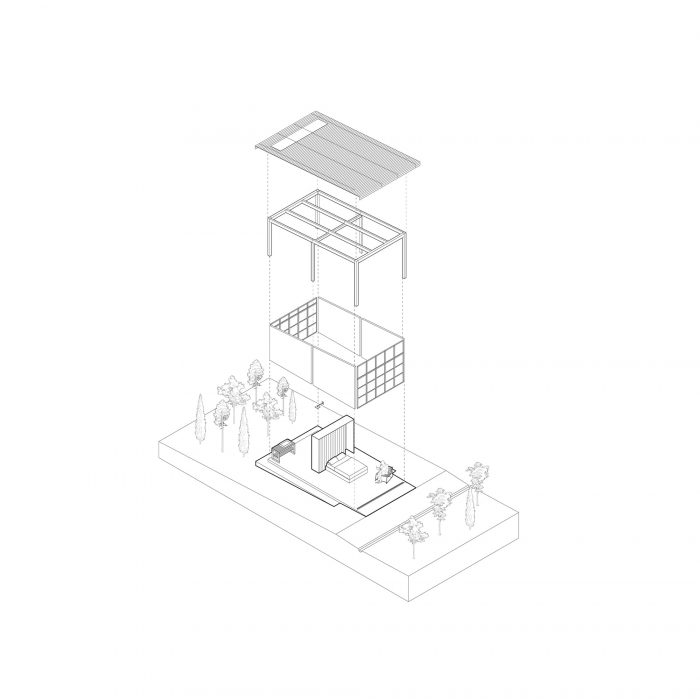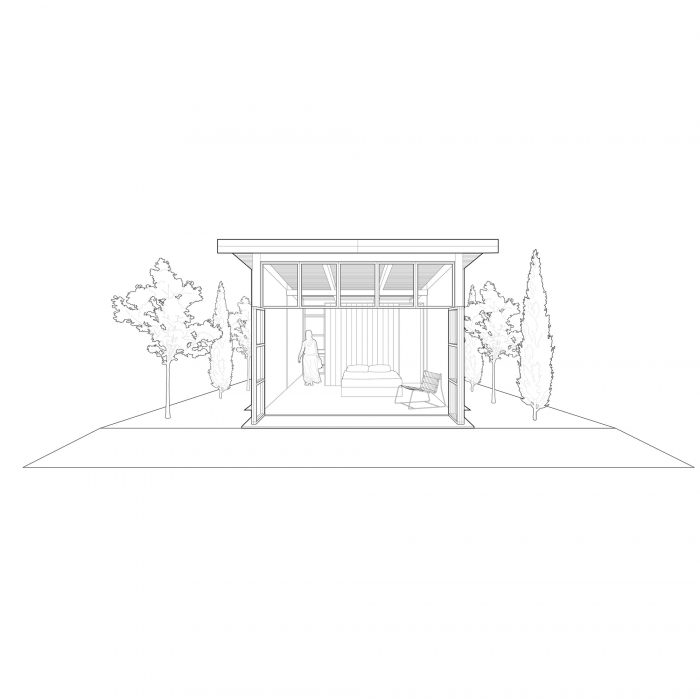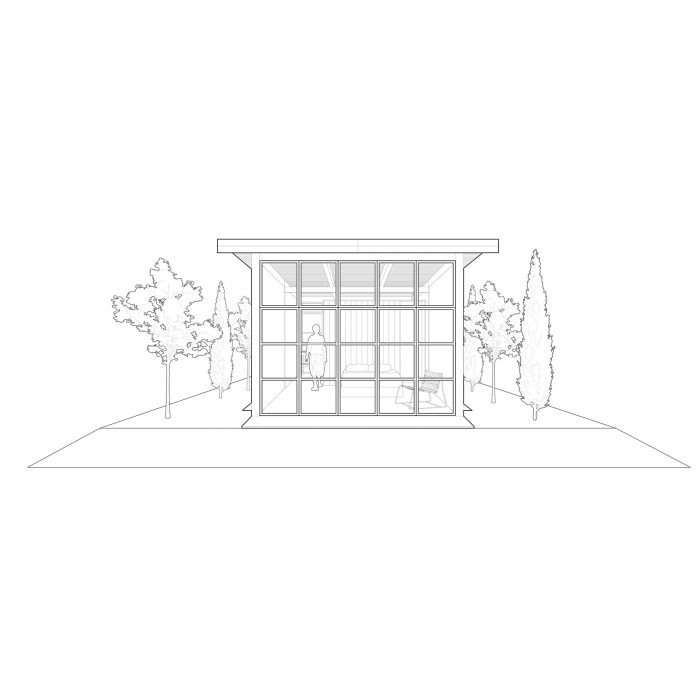这片土地位于Guayllabamba,一个距离基多市一小时车程的农村教区,其特点是在一个干燥的山谷里有一个绿色的地方。该请求。一对由历史学家和电影导演组成的夫妇,在大流行病后的阶段,他们认为有必要找到并建立一个与城市脱节并与自然重新联系的空间,一个在隔离期和周末休息和工作的空间。在他们的家庭土地上,充满了植被,其中必须有鳄梨树,他们找到了建立新空间的理想场所。
The land is located in Guayllabamba, a rural parish one hour away from Quito’s city, characterized by being a green spot within a dry valley. The request. A couple conformed by a historian and a film director, in the post-pandemic stage, they saw the need to find and build a space to disconnect from the city and reconnect with nature, a space to rest and work during periods of isolation and weekends also. In their family land, full of vegetation and must of it avocado trees, they found the ideal place to establish their new space.
作品以一个土盒子的形式出现,这个元素被植入一个开放的前部和后部,由周围的花园连接,像摄影机一样捕捉到房子最亲密的景色。一个开放的空间和一个开放的楼层被提出来,只被一件家具分割。这有助于组织空间和存储。
The work emerges as an earthen box, an element that is implanted with an open front and back, connected by the surrounding gardens, capturing the most intimate view of the house like a photographic camera will do. An open space and an open floor are proposed, divided only by one piece of furniture. It helps to organize space and storage.
建筑方案要求有一个带顶灯的大浴室和一个卧室/书房。在那里,夫妻俩可以直接与花园和自然接触,工作和休息,这可以通过折叠式外墙打开这种与外界的直接联系。
The architectural program requires a large bathroom with overhead lighting and a bedroom/study. Where the couple can work and rest in direct contact with the gardens and nature, which is possible by the folding facades that open this direct connection with the outside.
在这个作品中,我们强调了家具的最小化表达,只展示生活的必要元素。
In this work we emphasized the depuration of the furniture to its minimum expression, showing only the necessary elements to live.
在材料方面,调色板被减少到4种材料:混凝土为基础,夹层木为结构,巴雷克土为封闭物,铜玻璃为屏幕。巴哈雷克和木材支持恢复土地的象征性价值和与自然的联系,使空间的热舒适。
In terms of materiality, the palette was reduced to 4 materials: concrete for the foundation, laminated wood for the structure, bahareque earth for closures and copper glass for screens. The bahareque and wood support the recovery of the symbolic value of the land and the connection with nature, making the space thermally comfortable.
Architects: Rama Estudio
Area : 33 m²
Year : 2021
Lead Architects : Carla Chávez, Felipe Donoso, Carolina Rodas
City : Quito
Country : Ecuador

